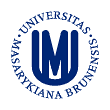



VACTERL is an acronym for:
These anomalies occur together more frequent than would be expected by chance alone (see definition of association). VACTERL can be diagnosed when at least 3 organ systems are involved.
Most cases are sporadic. More frequent in infants of diabetic mothers A common developemental pathogenesis is a defective mesodermal developement (for example a mesodermal septum between the future esophageus and trachea fails to develope). Precise etiology is unknown.
VACTERL has often similar features to sirenomely.
VACTERL has often similar feauters to another associations which belong to the range of mesodermal dysplasias (CHARGE, TACRD etc.)
Synonyms:
VATER association was described in 1973. The association has been expanded to include cardiovascular anomalies among the cardinal features and this constitute the VACTERL acronym used at present.
21-week fetus, VACTERL association;
anorectal aresia and rectovesical fistula; hypoplastic urinary blader;
single umblicical artery:
 VACTERL association, Macro, autopsy (72765)
VACTERL association, Macro, autopsy (72765)
Rectovesical fistula, detail:
 VACTERL association, Macro, autopsy (72766)
VACTERL association, Macro, autopsy (72766)
This pregnency was terminated because of a congenital heart defect diagnosed prenataly in the fetus. An autoptic examinaton revealed multiple anomalies associated with the heart defect.
Final diagnosis: VACTERL association.
Perineum, imperforate anus:
 VACTERL association, Macro, autopsy (72760)
VACTERL association, Macro, autopsy (72760)
Intestinal malrotation, the appendix is seen in the midline,
distended rectum proximal to the atresia:
 VACTERL association, Macro, autopsy (72761)
VACTERL association, Macro, autopsy (72761)
Abnormal shape of the heart with right ventricular hypertrophy,
right lateral displacement of the aorta:
 VACTERL association, Macro, autopsy (72762)
VACTERL association, Macro, autopsy (72762)
Esophageal atresia, broad tracheoesophagela fistula:
 VACTERL association, Macro, autopsy (72763)
VACTERL association, Macro, autopsy (72763)
Laryngeal atresia (occlusion by cartilage):
 VACTERL association, Macro, autopsy (72764)
VACTERL association, Macro, autopsy (72764)
Ultrasonographic examination in the 2nd trimestr showed multiple congenital malformations including hydrocephalus, abnormal fused vertebrae, ambigous genitalia. Pregnancy was terminated and the VACTERL association was confirmed by fetal autopsy.
Final diagnosis: VACTERL association with hydrocephalus.
Macrocephaly, short neck, libm deformities, skin appendage in the anal region:
 VACTERL association, Macro, autopsy (72767)
VACTERL association, Macro, autopsy (72767)
Thumb hypoplasia (appendix digitiformis without phalangae):
 VACTERL association, Macro, autopsy (72768)
VACTERL association, Macro, autopsy (72768)
Agenesis of external genitalia, absent anus, vaginal and urethral openings:
 VACTERL association, Macro, autopsy (72769)
VACTERL association, Macro, autopsy (72769)
Anorectal atresia, bowel distension proximal to atresia:
 VACTERL association, Macro, autopsy (72770)
VACTERL association, Macro, autopsy (72770)
Scolisosis, hemivertebrae and missing ribs:
 VACTERL association, Macro, autopsy (72771)
VACTERL association, Macro, autopsy (72771)